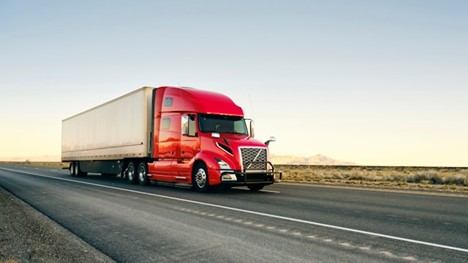
Truck accidents are complex events, involving multiple vehicles, intricate machinery, and sometimes severe injuries or fatalities. According to expert trucking professionals, properly investigating these incidents is crucial not only for legal and insurance purposes but also for understanding how and why the accident occurred. Unlike standard vehicle collisions, truck accidents present unique challenges due to the size, weight, and mechanical complexity of commercial vehicles. Accurate investigation and thorough evidence collection are essential for reconstructing events, identifying causative factors, and providing clarity in litigation or safety improvement initiatives.
The first steps in any truck accident investigation are critical to preserving evidence and establishing a clear timeline. Investigators often begin at the accident scene, documenting vehicle positions, road conditions, and environmental factors. Photographs, videos, and sketches are used to record the exact layout, including skid marks, debris patterns, and point-of-impact locations. Timing is essential; weather conditions, traffic flow, and cleanup activities can alter or obscure key evidence if not documented promptly.
First responders, including police and emergency medical personnel, also play a crucial role. Their initial reports provide insight into road conditions, driver behavior, and the immediate aftermath of the accident. Investigators must coordinate with these professionals to ensure accurate and comprehensive information is captured.
Large trucks are sophisticated machines, and understanding their mechanical condition is vital to any investigation. After the scene has been documented, investigators typically conduct detailed inspections of the vehicles involved. This includes analyzing brake systems, steering mechanisms, tire conditions, lighting, and suspension components. Any mechanical failure, such as worn brake pads or tire blowouts, can contribute to the accident and must be thoroughly assessed.
Electronic logging devices (ELDs) and other telematics systems have become critical tools in modern truck accident investigations. These devices provide information about vehicle speed, braking patterns, engine performance, and driver hours prior to the accident. By reviewing this data, investigators can determine whether mechanical issues, fatigue, or improper driving practices played a role.
Understanding the environment in which an accident occurred is equally important. Road conditions, traffic signals, signage, and lane markings are examined to determine whether external factors contributed to the incident. Weather conditions, including rain, ice, fog, or high winds, are documented and factored into the analysis. Investigators assess whether road maintenance, construction zones, or hazards such as potholes or debris influenced the truck driver’s ability to operate safely.
Environmental assessments also consider visibility and lighting conditions. Poorly lit intersections, glare from the sun, or obstructions like overgrown foliage can impair driver perception and reaction time. A comprehensive investigation integrates these factors alongside vehicle and driver data to provide a holistic view of the accident scenario.
Physical evidence on the roadway is one of the most telling aspects of truck accident investigations. Skid marks reveal braking behavior, point of impact, and potential evasive maneuvers. Tire impressions can indicate vehicle speed, direction, and changes in trajectory leading up to the collision. Investigators measure and analyze these marks meticulously, often using specialized tools and software to recreate the truck’s path and determine whether mechanical or human factors influenced the accident.
Debris patterns are also significant. The distribution of cargo, vehicle fragments, and roadway debris can help establish the sequence of events, identify the point of initial impact, and verify witness accounts. Collecting and preserving these materials is essential for reconstructing the accident with accuracy and reliability.
Eyewitness testimony provides context and details that physical evidence alone may not reveal. Investigators interview drivers, passengers, pedestrians, and bystanders to gather firsthand accounts of what occurred before, during, and after the collision. While human memory can be imperfect, corroborating witness statements with physical evidence and electronic data strengthens the overall investigative analysis.
Truck drivers are often asked to provide detailed accounts of their actions leading up to the accident, including speed, lane changes, braking patterns, and awareness of other vehicles. Investigators compare these statements with telematics data and road evidence to identify discrepancies or confirm key points.

Accident reconstruction is the scientific process of piecing together the sequence of events that led to a collision. Using data collected from the scene, vehicle inspections, and witness testimony, specialists create models that simulate the accident. These reconstructions help determine factors such as vehicle speed, point of impact, braking efficiency, and potential evasive actions.
Advanced software programs allow investigators to simulate collisions under various scenarios, testing hypotheses about driver behavior, mechanical failures, and environmental conditions. Reconstruction is not only valuable for understanding how an accident occurred but also for providing visual evidence in legal or insurance proceedings.
Truck accident investigations often intersect with regulatory standards set by federal and state authorities. Compliance with hours-of-service regulations, vehicle maintenance schedules, and safety inspections are assessed to determine whether violations contributed to the incident. Investigators examine logbooks, inspection reports, and maintenance records to ensure that all applicable rules were followed.
Safety culture within a trucking company can also influence accident outcomes. Companies with rigorous training, proactive maintenance, and robust safety programs are generally better equipped to prevent accidents. Investigators may review internal policies and practices to understand systemic factors that could have contributed to the collision.
Thorough evidence collection is critical for legal accountability. Whether a case involves insurance claims, liability disputes, or criminal proceedings, the accuracy and preservation of evidence can significantly impact outcomes. Investigators carefully document all findings, maintain chain-of-custody records for physical and digital evidence, and prepare detailed reports suitable for courtroom presentation.
Experts often testify as specialized witnesses, translating technical findings into understandable terms for judges, juries, and attorneys. Their expertise ensures that the evidence is interpreted correctly and that conclusions drawn from the investigation are scientifically grounded.
Advancements in technology have transformed truck accident investigations. Drones, 3D scanning, and high-resolution imaging allow for precise mapping of accident scenes, capturing details that may be missed by traditional methods. Telematics, GPS tracking, and vehicle sensors provide a wealth of data that can be analyzed to reconstruct events accurately.
Machine learning and data analytics tools are also emerging, helping investigators identify patterns, predict risk factors, and improve safety measures across fleets. While technology enhances accuracy and efficiency, it complements rather than replaces the expertise of trained investigators who interpret the data within the context of real-world driving conditions.
Truck accident investigations are intricate processes that combine science, technology, and professional expertise to uncover the truth behind collisions. From meticulous documentation of the scene to detailed vehicle inspections, environmental assessments, witness interviews, and accident reconstruction, every step is designed to ensure accuracy and reliability. The role of specialized knowledge, expert witnesses are invaluable in understanding both the mechanical and human factors that contribute to these incidents.
As technology continues to advance, investigators gain access to more precise tools and data, improving the ability to reconstruct accidents and enhance road safety. Thorough investigations not only aid legal and insurance processes but also contribute to the development of safer commercial vehicle practices, better driver training, and improved roadway conditions. By combining expertise, scientific methodology, and modern technology, the field of truck accident investigation continues to evolve, protecting drivers, passengers, and the public at large.